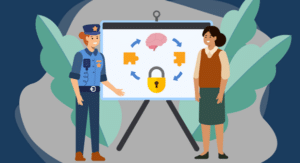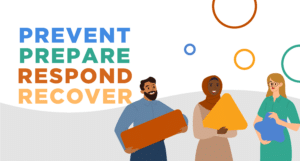Student wellbeing. Mental health support. Early intervention. Early Help. Safeguarding. Low-level concerns. Behavioral Threat Assessment (BTA). Adverse Childhood Experiences (ACE). Counseling services. CARE teams. Communities in Schools. Connectedness.
The list of terms surrounding how we talk about student wellbeing is as diverse as the student populations we serve.
While that speaks to how prevalent and—importantly—how front-of-mind our nation’s student mental health and wellness crisis is, finding the common terms to discuss these common concerns is critical to our community’s ability to communicate and provide supports for our students as they face these challenges.
Let’s look at what some of these terms mean and discuss how they work together in the larger conversation of student wellness.
Student wellbeing and the programs that support them
Student wellbeing takes a holistic look at a student’s ability to live a happy and fulfilling life and considers the impact their psychological, cognitive, social, and physical health has on a student’s life.
Through mental health services and other supports, such as programs like CARE and Communities in Schools, schools help to provide students with early intervention when they face challenges they are otherwise ill-prepared to face.
Recognizing when students are in need of these supports, however, is an obstacle schools confront daily. Enter: low-level concerns.
What are Low-Level Concerns?
Low-level concerns are observations a staff member may have about a student’s behavior or appearance. These can include irregular attendance, outbursts or meltdowns, unexplained bruising, new slang, appearing unkempt/disheveled, suspicions about food insecurity, or withdrawal symptoms, for example.
Common behaviors a student may exhibit if they experienced or are experiencing a traumatic event can vary by age. For example:
Elementary Students
- Overreaction to minor problems
- Stomachaches, headaches
- Regression behaviors (e.g., sucking thumb, baby talk, clinging to trusted adult)
- Hiding
- Startle easily
- Difficulty concentrating
- Poor eating habits
Middle and High School Students
- Withdrawing from friends or activities
- Irregular attendance
- Self-harm (e.g., cutting) or changes in weight
- Displaying bruises
- Sudden change in grades
- Excessively tired, unkempt or hungry
- Becoming secretive
When we put a couple of these low-level concerns together, we can gain a more holistic view to determine whether a student may need help. Called Safeguarding in the UK, when our policies, procedures, and practices provide that early help to a student, the solution is likely to be simpler and more manageable.
Tackling early intervention as a team
Defining these terms isn’t enough, however, and having enough support on campus is often a challenge. With increasingly heavy rosters of students to meet with, managing the volume of students needing support requires a team effort.
With staff—which should include all school personnel, like bus drivers, food services, and maintenance in addition to teachers and administrators—trained to recognize these concerns and share them with guidance, students can be paired with the appropriate services and supports more quickly.
Communicate when students need support using StudentSafe
“Schools cannot wait until a small problem has grown into a crisis before they take action,” stated Dr. Dewey Cornell, professor of education at the University of Virginia. “With a comprehensive approach like StudentSafe, our school counselors, psychologists, nurses, and social workers are better equipped to identify needs for support services, taking a truly proactive approach to student safety and wellbeing.”
Raptor’s patented StudentSafe technology brings together the systems that help schools recognize, document, support, and manage the wellbeing of individual students. Your staff is empowered to catalog low-level concerns for early intervention and, when necessary, qualified personnel can escalate a case to a behavioral threat assessment (BTA).
Through the StudentSafe platform, schools can:
- Document and manage low-level concerns
- Create student chronologies
- Run BTA workflows
- Manage BTA cases
- Gain immediate insight through alerts and robust dashboards
- Determine trends and gaps with full-scale reporting—and more.
How StudentSafe works
When a staff member logs in, they select the student, a category (e.g., bullying), and write a few notes. Only designated staff such as the guidance counselor will have access to view their entries, and districts can set alerts to notify counselors or other designated staff when a specific category is used.
Additionally, the StudentSafe dashboard will provide a quick view for designated staff to easily identify students who may need early help and support.
Finding funding—and how Raptor can help
Learn more about funds that can be used to better address students’ social, emotional, mental health, and academic needs through activities such as providing mental health and other related services.
Raptor’s funding specialists can help you maximize the impact of grant funds. Get in touch today.
Related Resources
Guide to K-12 Student Wellbeing
Strategies to Recognize, Document, and Support Students in Distress








